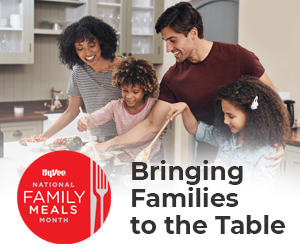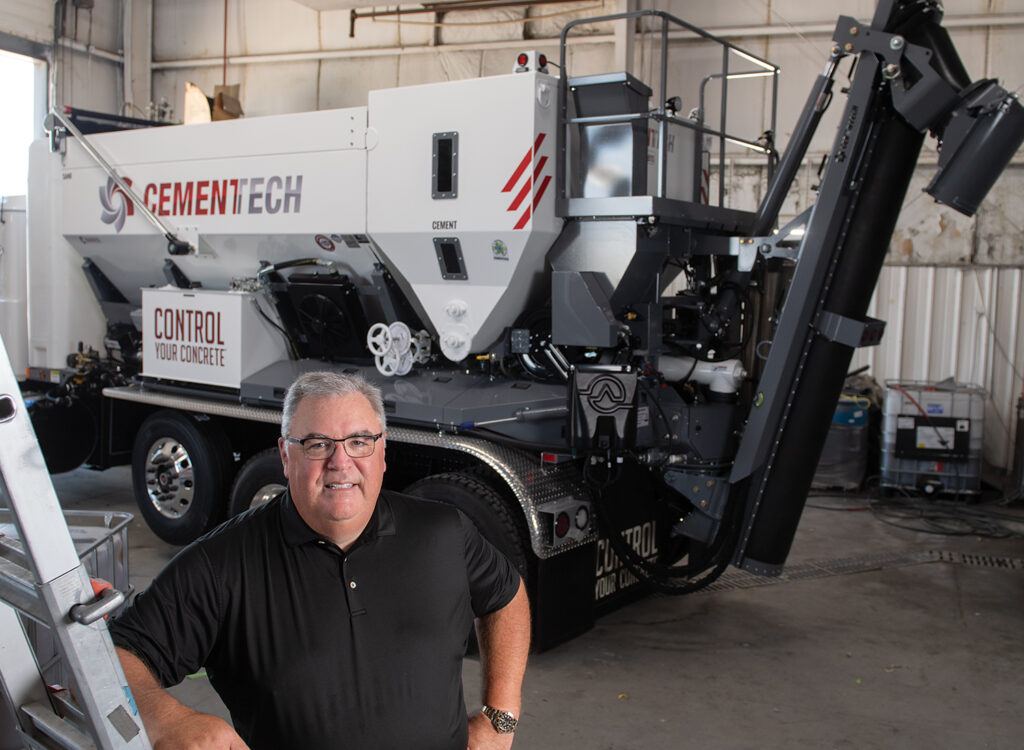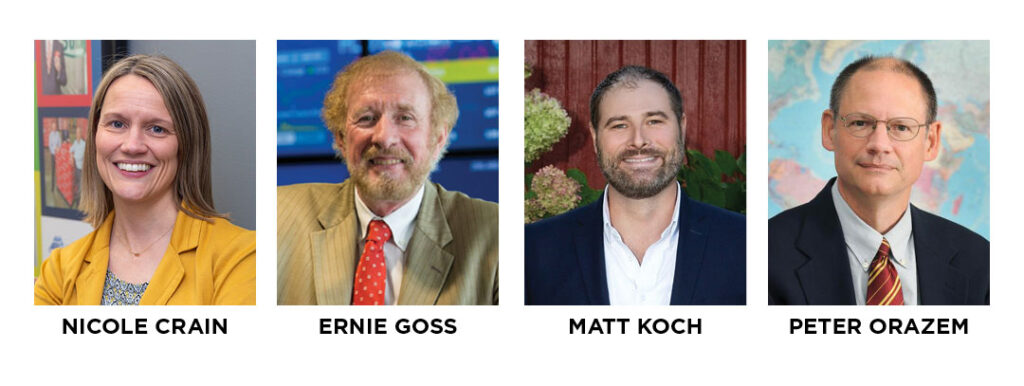Getting back to the office — safely
HR experts offer recommendations in recent Coping w/COVID webinar

The coming weeks and months will surely pose continued challenges to the leadership, communication and adaptability skills of Greater Des Moines organizations as they grapple with the seemingly simple objective of returning to the office and “back to normal.”
For many reasons, returning to the office will look different, feel different and will be communicated differently across many Central Iowa organizations, whether it’s a small firm or a multinational corporate headquarters. And the people-related and legal-oriented challenges surrounding the hidden hazards of what had once been the safest of work environments will require fresh thinking and flexibility from organizational leaders and managers.
More than 300 Business Record readers tuned in to a late-May
virtual discussion, moderated by Chris Conetzkey, executive editor and publisher, and Joe Gardyasz, senior staff writer. The panelists included:
Jim Green, a principal with Mercer in Urbandale
Kelsey Knowles, an attorney with Belin McCormick law firm in Des Moines
Beth Nigut, chief people officer with EMC Insurance Cos
Drew McLellan, principal of McLellan Marketing Group
It’s largely unplowed turf, and no one seems to have a COVID-19 GPS on their tractor, the panelists conceded.
“I think one of the challenges that makes this a very unique situation is that there is no [one] right way to do this,” McLellan said. “The right way for a 12-person office is very different from a 1,200-person office. We’re dealing with facts, but even those are not universally shared. And we’re dealing with everybody’s emotions. So from a communication standpoint, we’re all going to be going back to work at different times and in different ways.”
Among other takeaways from the panel, reopening remains a fluid situation for many organizations, but there seems to be some consensus toward taking a slow and deliberate approach. Additionally, it makes a lot of sense to provide employees ample opportunities to be involved in the decision-making process.
Panelists also observed that smaller organizations may be the key trendsetters to watch most closely for cues on best practices. It’s also a good idea for leaders to ensure that at least a few key people in the organization are learning and keeping updated on the latest government safety guidelines issued by the Occupational Safety and Health Administration and the Centers for Disease Control and Prevention.
Similar to how the move toward more digital approaches in business has fueled a push toward optimizing workflows and work processes, the pandemic may lead employers to further consider how to streamline their organizations, Green said.
Here are excerpts of some of the panelists’ takes on various aspects of reopening:
What’s the feeling on reopening from your perspective?
Green: I think one of the things that we are seeing right now is this kind of phased approach, in terms of a slow, deliberate and intentional [approach], really trying to be mindful of how employees are feeling about this. There are certainly some employees that are anxious to have social interaction again, and other employees that I think are probably a little more reserved, and quite honestly have a little bit of a fear and anxiety about what going back into an office space looks like. … That might be anywhere from 10% to 20% of a workforce that’s coming back — very intentionally and slowly — and seeing how that works and what that looks like before adding to that.
Nigut: It’s fluid for EMC, as it is for most organizations. Several weeks ago we had targeted maybe taking a look at potentially returning to the office in some way in May, then looking at July, and now we’re still continuing to reassess those return-to-office protocols. We’re looking at a date beyond July in terms of a phased approach, knowing and communicating that it is very fluid and that we will continue to reassess what that looks like.
McLellan: This is a great time to invite your employees to have a voice in this. I think you have to do it carefully, so that you don’t inflate how much their voice is going to influence the decision, but present some scenarios of how we might go back and ask for their feedback. I think what makes this situation so unique is the health aspect of it, so they feel like they should have more control over what happens to them and the risks they’re taking. So this may be a time to do some sort of survey or collect some important data from the team as you are putting together these scenarios.
Knowles: Normally a lot of smaller companies want to look to our bigger companies to lead the way. … This is a little bit different, because when we talk about employee comfort levels and even following the legal requirements and OSHA and CDC guidelines, a smaller employer might be able to get their employees comfortable and meet those guidelines much easier than a larger employer and at a very different cost. … For a bigger employer it may be a question of can we afford to install physical barriers between all of our workstations, whereas a smaller employer might be able to buy 10 pieces of plexiglass and put in physical barriers that really kind of help address those employee concerns.
What are some other things to consider about reopening?
McLellan: One of the things that we’re finding that is challenging is that we’ll probably be back at work in the office sooner than a lot of our clients will. So what does that do to face-to-face meetings? Does that mean they still are open to them, and we should hop on a plane and go? Or does that mean they want to wait until they’re back in the office before they interact in a closer proximity?
Knowles: Have a couple of people in your organization sit down and very closely read the CDC guidelines for businesses. There’s a packet employers look at … and look at the OSHA guidelines on sanitation, and have a plan for, you know, your regular cleaning and a plan for what you’re going to do when people are sick, both if they’re actually diagnosed with COVID and if they are sick with what could just be a cold or allergies. You have an obligation as an employer under OSHA, there’s a general duty clause where you essentially have an obligation to provide a safe working environment.
Typically, we think of things like appropriate-height desks and comfortable chairs and things like that. Now, we need to think, are we providing a work environment that does not unnecessarily expose people to COVID-19? The guiding light for that right now is to be able to say we are following the CDC and the OSHA guidance, and that’s not something that normally we spend a lot of time thinking about. I have already seen OSHA complaints involving COVID-19, and if you have to respond to an OSHA complaint about COVID-19, you want to be prepared to say [what your protocols are].
Green: One of the things that’s been in our return-to-work playbook is to have a pretty basic standard of practice that you can easily communicate with your employees. An example comes from one of our clients. They’re a food manufacturer, and they communicate it as the 6-20-100 rule. The 6 is obvious — stay 6 feet apart. The 20 is to wash your hands for 20 seconds, whenever you have the opportunity. The last is 100, which stands for having a temperature of less than 100 degrees. So they do a really good job of ‘communicate, communicate, communicate’ with their point of 6-20-100. It’s simplistic, it’s easy to remember. And it’s something that they can promote over and over.
Nigut: One of the things that we want to guard against is that inevitable situation when somebody is positive for COVID or has those symptoms, that you’re making sure [there isn’t broad exposure] — that you’re taking all the reasonable precautions. If you’re taking a phased approach or even rotating schedules, as an employer, a department or a small business, you know who is within your physical space on any given day, you’ve got a better indication of being able to provide information to others if they need to get tested.
How should employers balance safety protocols in the office with the rights of employees who may be risking exposure in their off time activities?
Knowles: The EEOC has come out with guidance on the employee health questions and your ability to ask some of those questions because of the direct threat analysis, as it’s called under the Americans with Disability Act. And so you can ask people whether they’re symptomatic. You can, in some circumstances, test your employees or send them to get a test because you are protecting your workforce. There is really good guidance on the EEOC’s website that’s very helpful.
When it comes to the employee’s outside-of-work behavior, if you have concerns that they went to a concert or engaged in some risky behavior there, you can certainly respond to that. You can certainly respond to that, unless it’s some sort of protected behavior. That’s where you would want to be a little more cautious — if they were at a protest or something like that, you want to proceed a little more cautiously. I do think one of the things that a lot of employers are struggling with is that a lot of this is in the eye of the beholder.
What is the practicality of screening all employees’ temperatures or doing actual COVID-19 testing on a regular basis?
Nigut: At this point we are not doing any specific attestation. … We have signage up at virtually all locations where one might enter our offices indicating our criteria, and by entering you’re acknowledging that you’re aware of it. … We’re really using that as our reasonable, practical approach to making sure that people can enter aware of what we’re requiring for a safe space within our environment. … Our actions may change in the future, but we’re comfortable with what we’re doing at this point in time.
Green: Responding to that question a little more broadly, Mercer conducts spot surveys on a weekly or biweekly basis — we usually have between 200 and 500 participating companies. Thirty-five percent of our respondents have said they plan to undertake screening or assessment measures for employees returning to the office; 26% are doing temperature screening; only 3 to 4% are doing actual virus testing.
What if you take all reasonable measures, yet your organization still has positive cases?
Knowles: One thing from a legal perspective that everyone should keep in mind is that if you do any sort of screening such as temperature checks, that is medical information and needs to be maintained as confidential medical information under the [Americans with Disabilities Act]. The employer has to maintain it like any other employment record, in a separate medical file — you cannot share it. Just like if you have an employee who tests positive, you cannot disclose that employee by name. You can say we had a positive test, and we have reason to believe you may have come in contact with someone who tested positive.
On the flip side, I’ve talked to a lot of employers who are concerned that if they don’t do some sort of screening, or some sort of attestation, they’re going to be one of these employers on the news who had somebody working for a couple days sick and they would expose their whole workforce. … A lot of manufacturing-type facilities are handling it on the side of the spectrum where everyone is screened in the morning for their temperature and then they check off: I don’t have the symptoms. On the other end, I’ve talked to a lot of office environments that are particularly smaller offices that are handling it on the side of things where they say, “This is kind of a social contract — we work together, and when you come in, you are exposing your co-workers. And so we’re asking that you take this incredibly seriously.”
The employee can certainly tell you, “I’ve tested positive” or “I’ve tested negative” and if the employee says, “ am OK with telling my co-workers it’s me” or the employee shares that information, they have the right to disclose their confidential information. You as the employer just don’t have the right to share that without their consent. So there certainly have been some cases where individuals have disclosed their status because they feel like then people can make a better assessment of their own health.
How should organizations communicate that they are going to be open for business?
McLellan: I think we use buzzwords like “unprecedented” and “challenging” and all of that, because we’re not really sure how to talk about this. I think the more you can just be as genuine as you can be about the circumstance [the better]. … But I think what people care about right now is they want clear information [about the safety standards that have been put in place for the workers, and what is expected of visitors].
Nigut: The biggest thing is [considering] what is going on within the community, whether it’s in the state of Iowa, the community of Des Moines or wherever our branches are located in different states. … We have done surveys with all of our employees across all of our branch locations and our corporate office to engage with them and find out, how are they doing? What is their desire to return to the physical office? What is their desire to continue to work from home? What are the obstacles that may be going on that require them to continue working from home? So it’s both taking the community perspective as well as the voice of our employees.
What is one final takeaway you can offer?
Green: As a business owner or business leader, if you haven’t done so already, consider forming a cross-functional multidisciplinary team to capture your employees’ voices, to make sure you’re representing all the different areas of your business and also to help develop what that communication outward looks like.
McLellan: I think a lot of this is, in some ways, marketing. How you communicate when you’re going back and how you’re going back can either freak out your employees or get them excited about being back into the workplace and working the way they think of as normal. So much of this is a test of our leadership, our communication skills and styles. And I think you have to really be mindful of how you are communicating both verbally and nonverbally to both your internal and external audiences.
Nigut: To reiterate a little bit — ask your employees, listen to your employees, and then communicate honestly to your employees. And it’s OK to say, ‘I don’t know right now — we will figure this out together.’ And I think that it also is important to understand the implications that this does have on the mental health and well-being of our employees. That’s why I think it’s really important that we are asking with that authentic, listening type of perspective, so that we can make sure that we are also marketing to our employees the resources we have available for fhem.
Knowles: My biggest takeaway is to remember that we have a lot of laws that govern employment, and none of them were designed for a pandemic. And so before you take any action against an employee, before you discipline someone, before you fire someone, you want to be really careful. And that’s on both ends of the spectrum — the person who … doesn’t think there’s anything going on and the person who is scared to return to work — because on both ends of the spectrum, they may have some legal protections. We don’t have case law to look at. … So it takes a lot more thinking through it on the front end, and frankly, it’s probably going to require you to give some people grace, even when their leaders are frustrated and annoyed with the situation.









